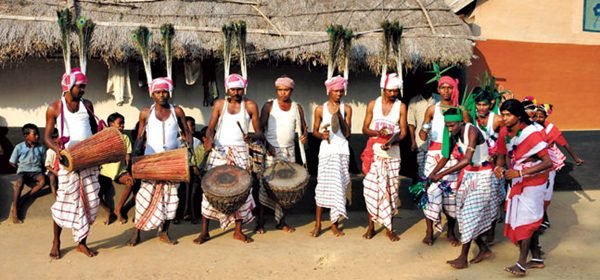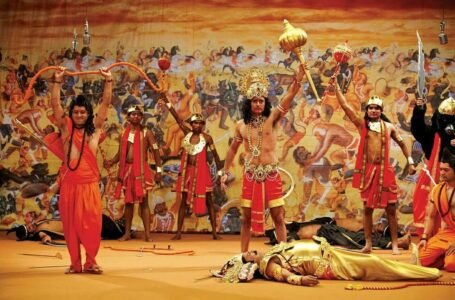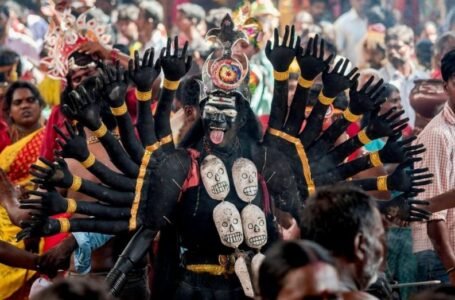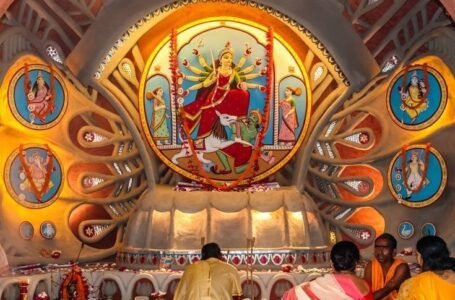Gondin Deo: The Spiritual Anchor of the Gond Tribal Community

Gondin Deo holds a deeply revered place in the religious and cultural life of the Gond tribal community, one of the largest and most ancient indigenous groups in India. The Gonds, who primarily live in the forested heartlands of central India—including regions like Madhya Pradesh, Chhattisgarh, Maharashtra, Odisha, and parts of Telangana—consider Gondin Deo not just a deity but a profound link to their environment, ancestors, and collective identity.
This article takes a closer look at the many facets of Gondin Deo’s significance. It explores the mythological stories that surround this deity, the cultural practices that honor them, and the deep environmental connection that underscores the Gond way of life. It also highlights the challenges faced in preserving this vibrant spiritual tradition in the face of modernization and environmental degradation.
The Gond tribe is one of India’s oldest and largest indigenous communities, with a history stretching back thousands of years. They primarily reside in the central states of Madhya Pradesh, Chhattisgarh, Maharashtra, Odisha, Andhra Pradesh, and Telangana. Renowned for their rich cultural heritage, the Gonds have managed to preserve their distinctive traditions, folklore, and spiritual practices, even in the face of modernization and external influences.
Religion is an integral part of the everyday lives of the Gond people. Their belief system is rooted in animism, a worldview that sees spiritual energy in elements of nature like trees, rivers, mountains, and animals. This deep connection fosters a profound respect for the natural world and an appreciation for its cyclical and interconnected relationships. Central to this belief system is Gondin Deo, one of their primary deities, who embodies these values as a guardian of both the community and the environment.
The mythology of Gondin Deo is deeply rooted in the oral traditions of the Gond people. Passed down through generations, these stories describe him as a benevolent guardian who emerged to protect the community from natural disasters, diseases, and harmful forces.
A recurring theme in these tales is Gondin Deo’s strong connection to the natural world. He is often portrayed as a deity who dwells in sacred groves or atop mountains, watching over the community and maintaining harmony between humans and nature.
In Gond mythology, Gondin Deo is deeply linked to fertility and agriculture. He is regarded as the divine force that blesses the soil, ensuring that crops grow abundantly and the community thrives. Festivals and rituals dedicated to him often align with the agricultural calendar, highlighting his essential role in supporting the livelihoods of the Gond people and ensuring the prosperity of their harvests. These celebrations are a testament to his significance in the everyday lives of the community, as they rely on his blessings for a fruitful and sustainable future.
Worshiping Gondin Deo is a communal practice that embodies the collective spirit of the Gond people. The rituals are usually held in sacred spaces like groves or temples, places believed to be especially charged with the deity’s presence. During these ceremonies, offerings of food, grains, flowers, and occasionally animal sacrifices are made, all with the intention of honoring Gondin Deo and seeking his blessings.
The shaman or priest plays a key role in these rituals. Acting as a bridge between the deity and the community, they lead prayers, offer guidance, and interpret the will of Gondin Deo, ensuring that the spiritual connection is maintained and that the community’s needs are addressed.
Festivals dedicated to Gondin Deo are lively and communal, filled with traditional music, dance, and various rituals. These celebrations are not just a way to honor the deity, but also an opportunity to bring the community together, reinforcing the bonds that tie them. Many of these festivals align with important moments in the agricultural cycle, such as the sowing or harvesting seasons, underscoring Gondin Deo’s crucial role in ensuring a bountiful harvest and the prosperity of the community.
The sacred groves where Gondin Deo is worshipped are not just places of religious significance; they are a symbol of the Gond people’s deep respect for nature. These groves are carefully protected areas, where activities like cutting down trees or hunting animals are strictly prohibited. By preserving these groves, the community demonstrates its belief in the interconnectedness of all life and its responsibility to maintain the delicate balance of the ecosystem.
Gondin Deo’s role as a nature deity reflects the Gonds’ animistic worldview, where the natural world is seen as deeply sacred. He is viewed as the protector of forests, rivers, and wildlife, reflecting how the community depends on these natural resources for survival. This close connection to nature is evident in the rituals and offerings made to Gondin Deo, which often include items gathered from the local environment, symbolizing the community’s reverence for the land that sustains them.
The worship of Gondin Deo strengthens the Gonds’ role as caretakers of the environment. By imbuing natural elements with spiritual significance, the Gonds are reminded of their responsibility to protect the land. This deep connection has played a key role in preserving the biodiversity of their regions, even in the face of outside pressures that threaten these delicate ecosystems.
Gondin Deo is not just a protector of nature but also a guardian of the community. When the Gonds face illness, conflict, or hardship, they turn to him for spiritual guidance and protection. Through rituals and prayers, they seek his intervention, believing that his blessings can bring healing, peace, and restore harmony to their lives.
The communal worship of Gondin Deo fosters a sense of unity and shared purpose among the Gond people. Festivals and rituals are opportunities for the community to come together, reaffirming their cultural identity and strengthening social bonds. This collective spirit is a defining characteristic of Gond society.
The fast pace of modernization and urbanization presents major challenges to the traditional worship of Gondin Deo. As younger generations move to cities for education and work, they often drift away from their ancestral practices. The separation from nature in urban settings also diminishes the importance of deities like Gondin Deo, making it harder to maintain these deep-rooted traditions.
The spread of mainstream religions like Hinduism and Christianity has pushed indigenous beliefs to the margins. In some instances, Gondin Deo has been incorporated into the Hindu pantheon or replaced by Christian figures, which has led to a loss of the original practices and the deeper significance of the deity.
Deforestation and environmental degradation pose a serious threat to the sacred groves and natural spaces where Gondin Deo is worshipped. The destruction of these sites disrupts not only the rituals tied to Gondin Deo but also the ecological balance that is at the heart of the Gonds’ way of life. Losing these areas diminishes both their spiritual and environmental significance.
Despite these challenges, the worship of Gondin Deo continues in many Gond communities. Efforts to preserve tribal culture and heritage have helped bring renewed focus to indigenous deities like Gondin Deo, highlighting their vital role in maintaining cultural identity and connecting the community to its roots.
Gondin Deo has come to symbolize resistance against cultural assimilation and marginalization. By continuing to honor their deity, the Gonds are asserting their right to preserve their traditions and uphold their identity in a world that is rapidly changing.
The Gonds’ reverence for nature, embodied in the worship of Gondin Deo, aligns with contemporary environmental movements. Their sustainable practices and respect for ecological balance offer valuable lessons in addressing modern environmental challenges.
In conclusion, Gondin Deo is much more than just a deity—he is a powerful symbol of the Gond people’s strength, cultural identity, and their deep connection to nature. His worship embodies a worldview where the spiritual and natural worlds are closely intertwined, with Gondin Deo playing a vital role in ensuring the fertility of the land and the well-being of the community. The rituals, festivals, and sacred groves dedicated to him highlight the Gonds’ respect for the environment and their role as guardians of the land.
However, the practice of worshipping Gondin Deo faces significant challenges in the modern world. The forces of urbanization and modernization, along with the spread of mainstream religions, pose a serious threat to these traditional practices. As younger generations move to urban centers for education and work, they often become disconnected from their ancestral beliefs. The influence of external religions also diminishes the role of Gondin Deo in everyday life. Additionally, environmental degradation, particularly deforestation, jeopardizes the sacred groves and natural spaces essential for these rituals, threatening both spiritual practices and the ecological balance that has long sustained the Gonds’ way of life.
Despite these challenges, the worship of Gondin Deo endures in many Gond communities. It stands as a testament to the resilience of the Gonds, who continue to honor their deity and preserve their cultural heritage. By doing so, they assert their right to maintain their identity in a rapidly changing world, resisting forces of cultural assimilation. Gondin Deo’s reverence for nature also resonates with modern environmental movements, offering valuable insights into how humans can live in harmony with the natural world.


